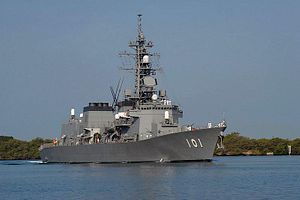A word of advice for the Japan Self-Defense Force as it prepares to test its capacity to retake an island seized by some, er, mythical antagonist. This is the JSDF’s first such maneuver. Why now? Doubtless Tokyo is fretting about Fiji’s sending an armada steaming across the Pacific to conquer Japanese territory. You know how bloodthirsty those Fijians are.
Whatever the case, pleeease fight the temptation to rig the rules of the game to yield results congenial to outside observers. If anything, make the simulation harder than real life. The tougher the exercise, the more manageable the real thing. Combat is an unsparing judge of military effectiveness. Better to expose your shortcomings under exercise conditions than under fire — when experimenting with alternatives costs lives while courting defeat.
This is doubly true of island warfare. Seizing an island held by dug-in invaders ranks among the stiffest challenges amphibious forces face. Nor does any contemporary maritime force have any experience at it. No one has risked an opposed amphibious landing since the Korean War. Having defended its island holdings ferociously during World War II, one hopes Japan grasps the perils and costs of amphibian undertakings — and will design an exercise that realistically mimics a wily “red team,” or opponent.
Why belabor this commonsense point? Because common sense isn’t always a common virtue in big organizations. Peacetime armed forces hate bad press. It damages their reputation for martial skill and élan while menacing their budget share. Maneuvers that reveal inadequacies call military competence into question in the eyes of officialdom, the populace, allies, and prospective foes.
Commanders understandably prefer to portray their institutions as battleworthy, and thus worthy of future taxpayer largesse. Under such circumstances, pressure mounts to put the service’s best foot forward, producing results that vindicate combat prowess. Accordingly, gamesmen designing an exercise may posit assumptions and issue rules that steer the proceedings toward a sunny outcome rather than a debacle. A garbage-in-garbage-out dynamic may take hold.
By no means is this a uniquely Japanese failing. Think about the U.S. military’s gaming before the Vietnam War. When exercises indicated that the ground-force requirements to prevail in Indochina were politically unthinkable, military officials changed the assumptions — for example, by stipulating that one American battalion was worth X communist battalions — and presto! all of a sudden the numbers worked out. Or, similarly, the U.S. Navy rejiggered the rules of its 2002 Millennium Challenge exercise after U.S. Marine General Paul Van Riper pummeled a navy task force with irregular units such as those deployed by Iran. Ensuing results were more palatable.
Fettering the red team’s options or ingenuity eradicates the back-and-forth dynamic that permeates real-world competition and strife, when two opponents continually try to outthink and outdo each other. Unrealistic assumptions reduce a thinking, resolute adversary to a lifeless mass on which the blue team works its will. Succumbing to this temptation gives wargames a dangerously artificial character that in turn can delude commanders and their political masters into complacency. And complacency is the enemy of success in any great enterprise.
So JSDF commanders, pit your forces against the opponent’s first team. Find your best counterpart to General Van Riper, put him in charge of the red team, and accept — and embrace — the verdict if things go badly. However dismal the results may be, refuse to avert your eyes. Refuse to whitewash them or try to explain them away. Then figure out how to thwart the defenders next time. Japan’s territorial integrity could depend on it.

































